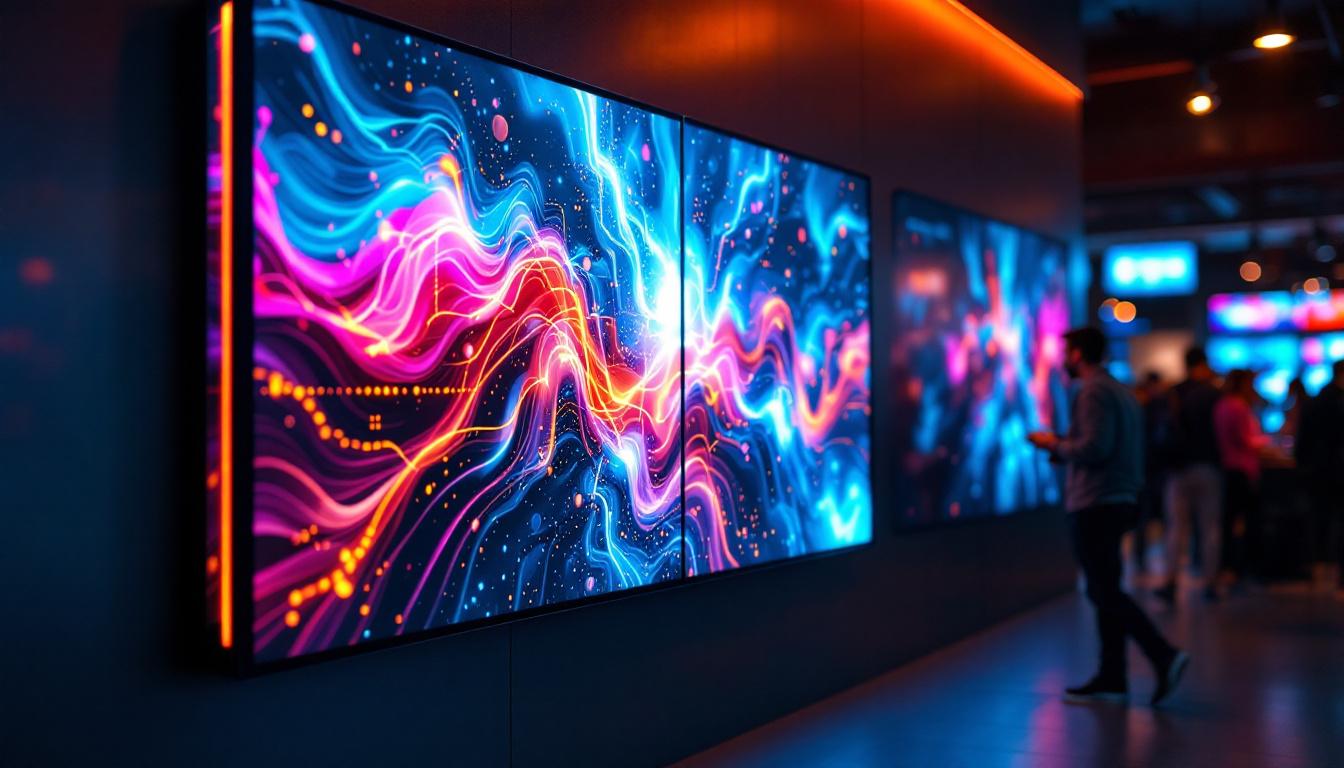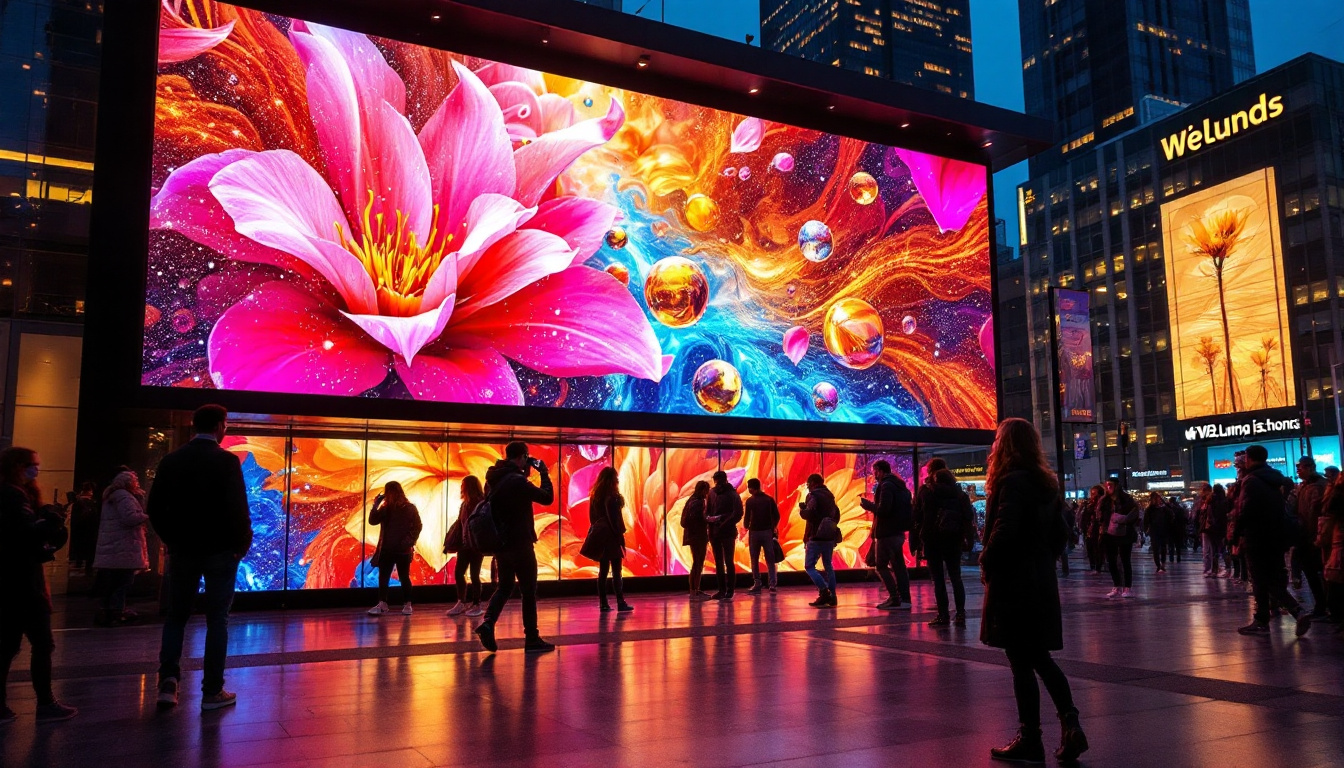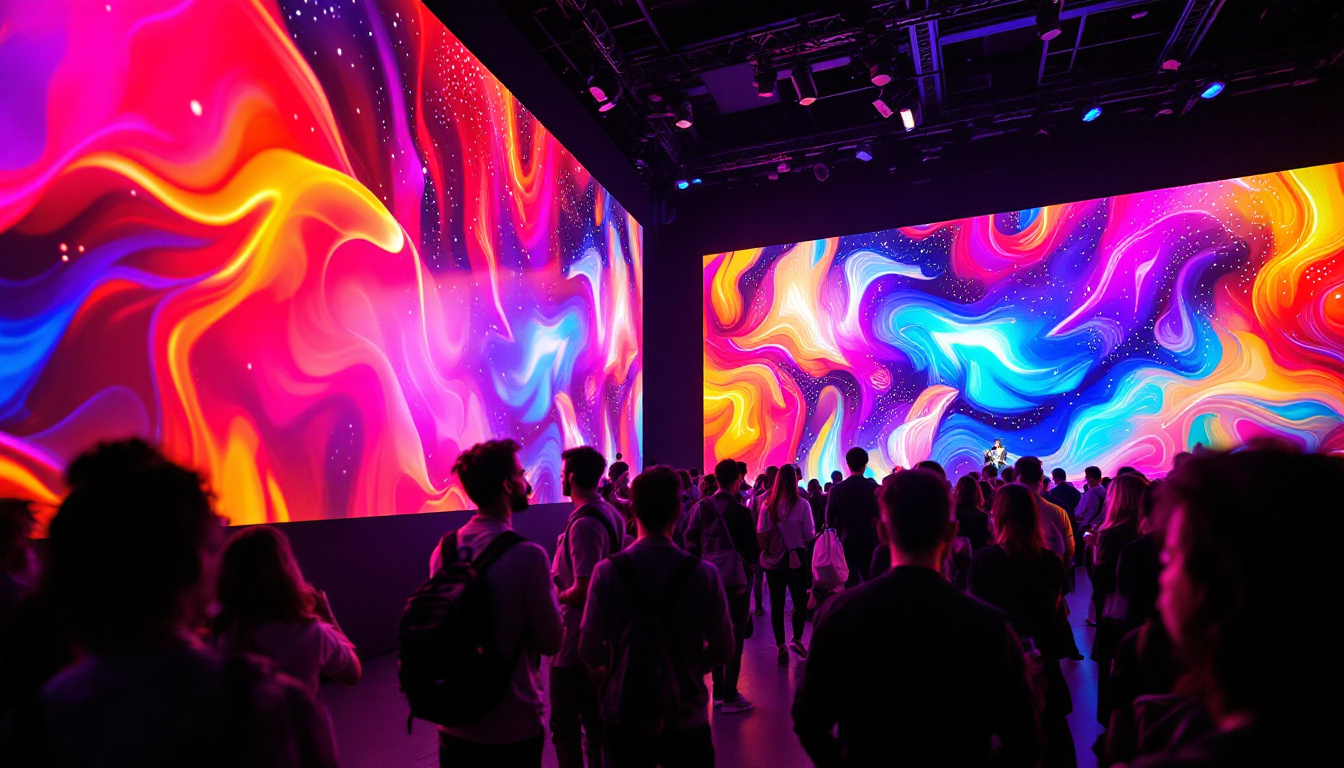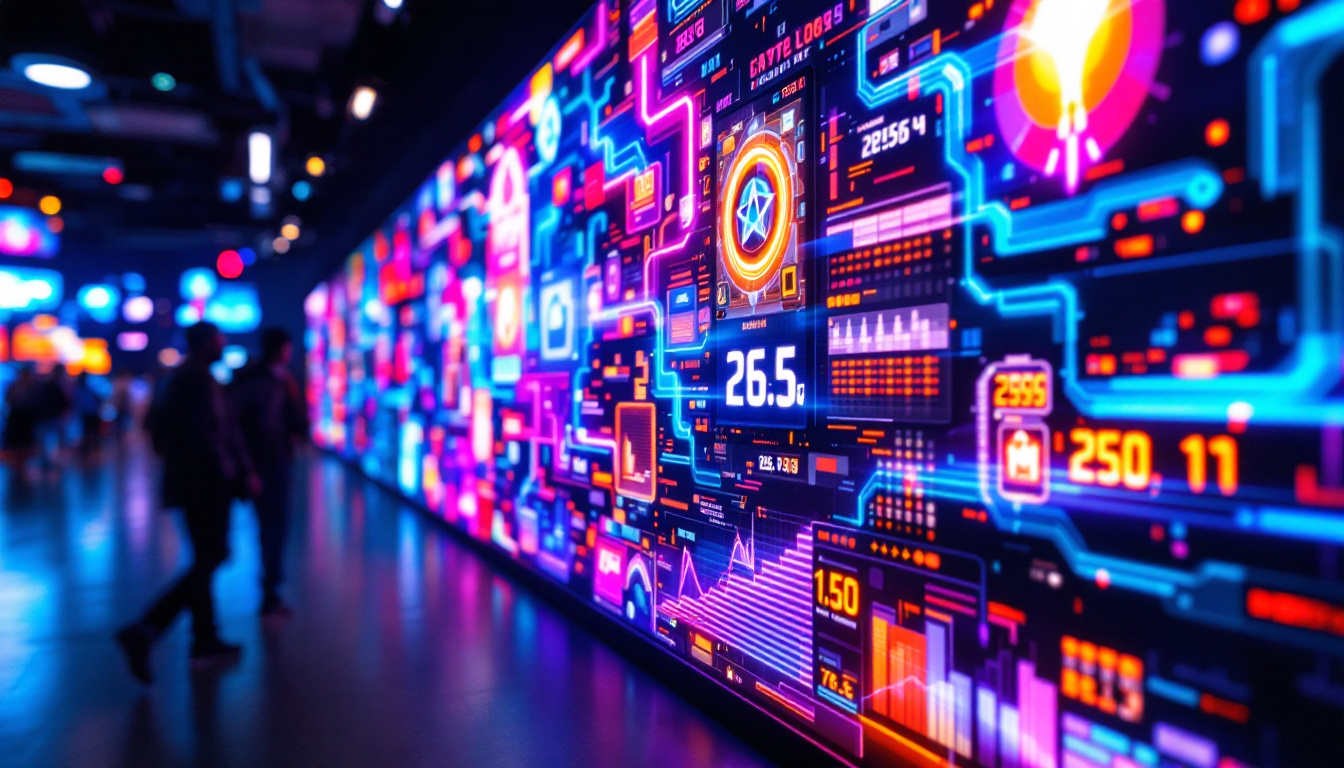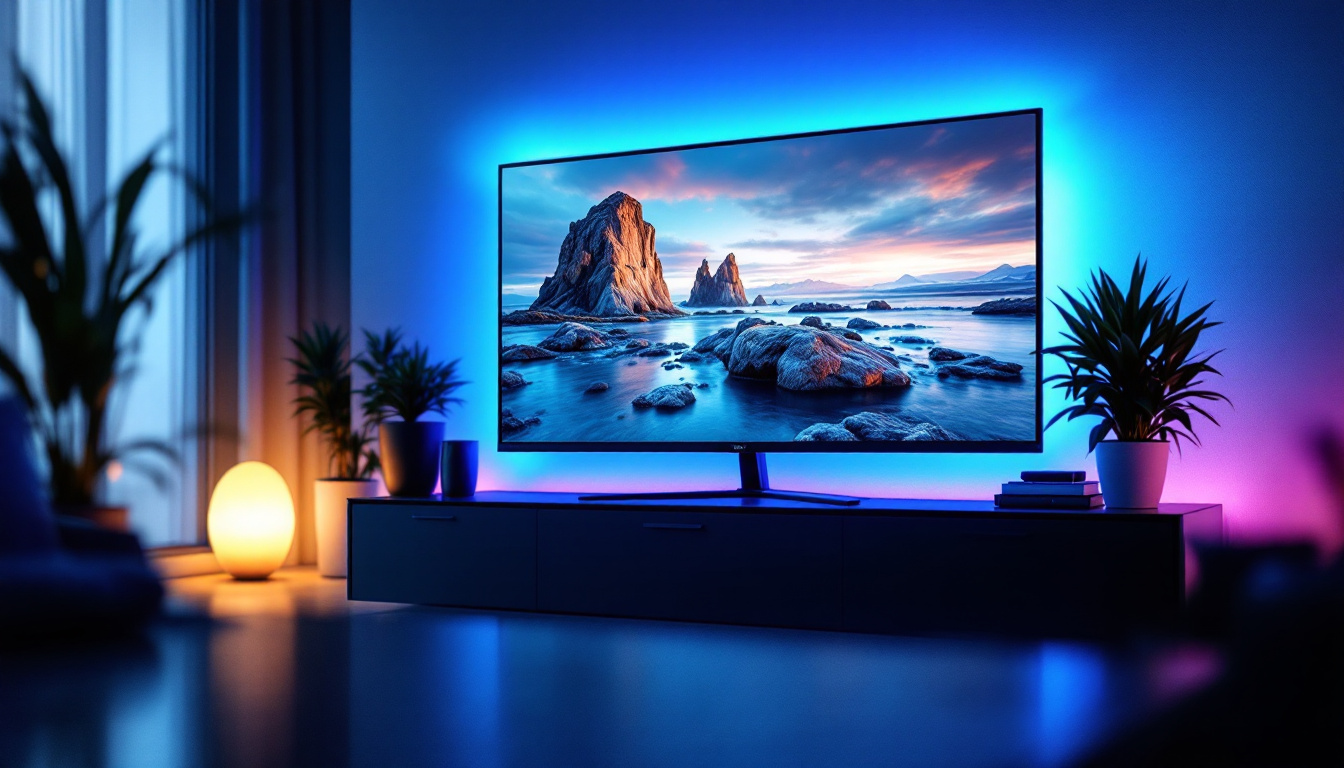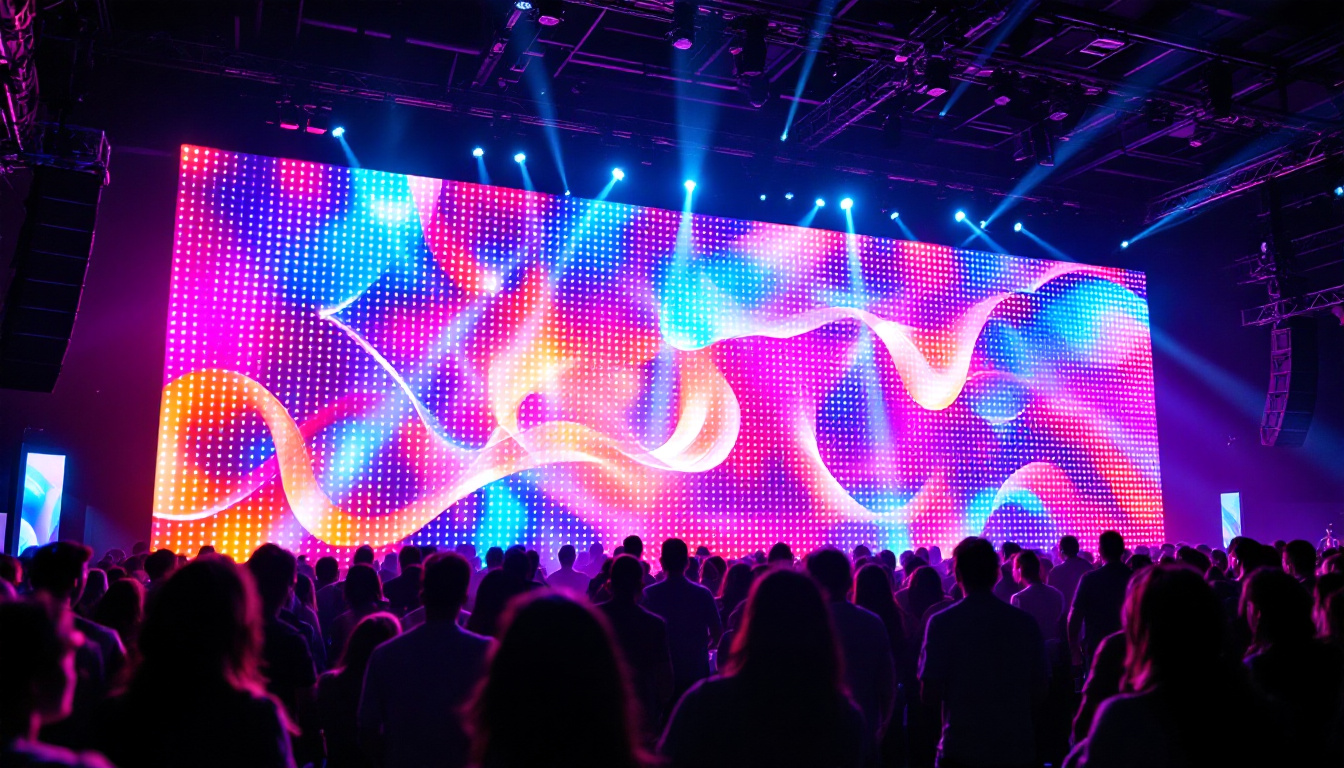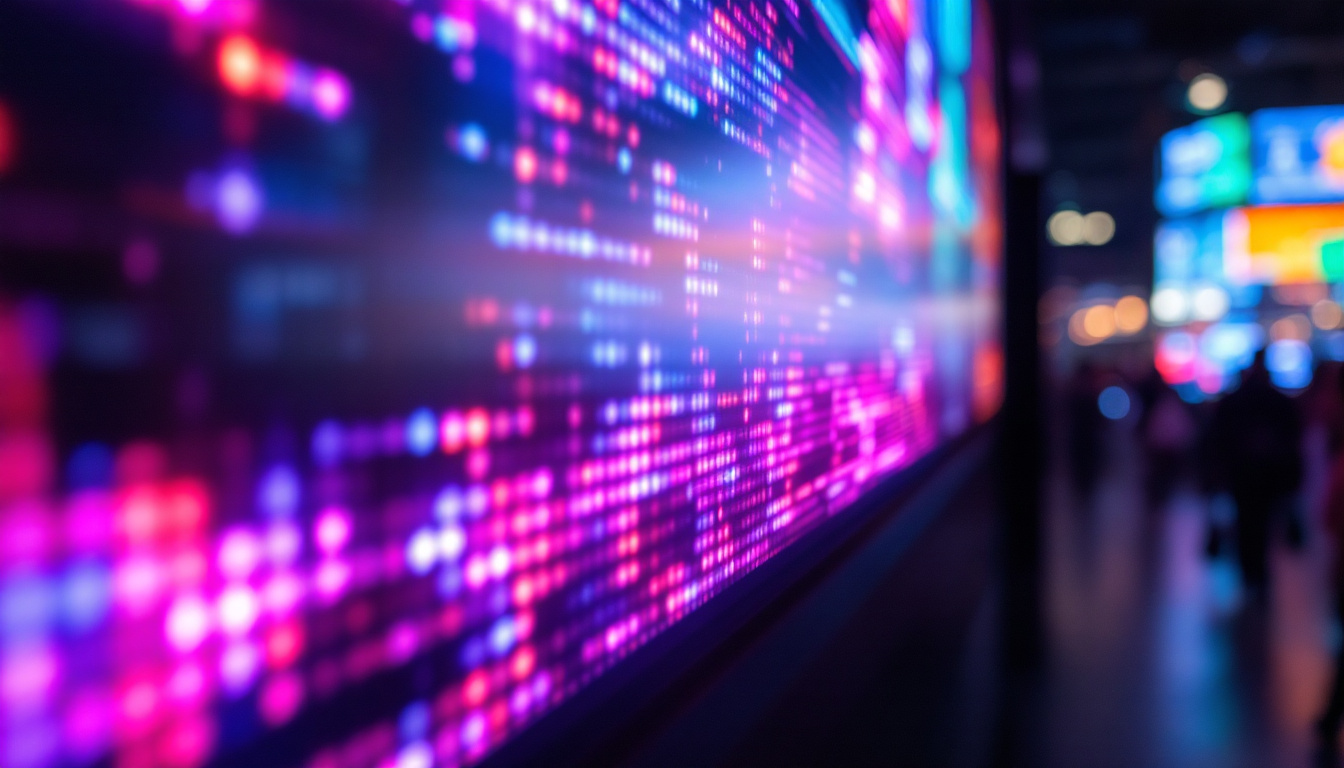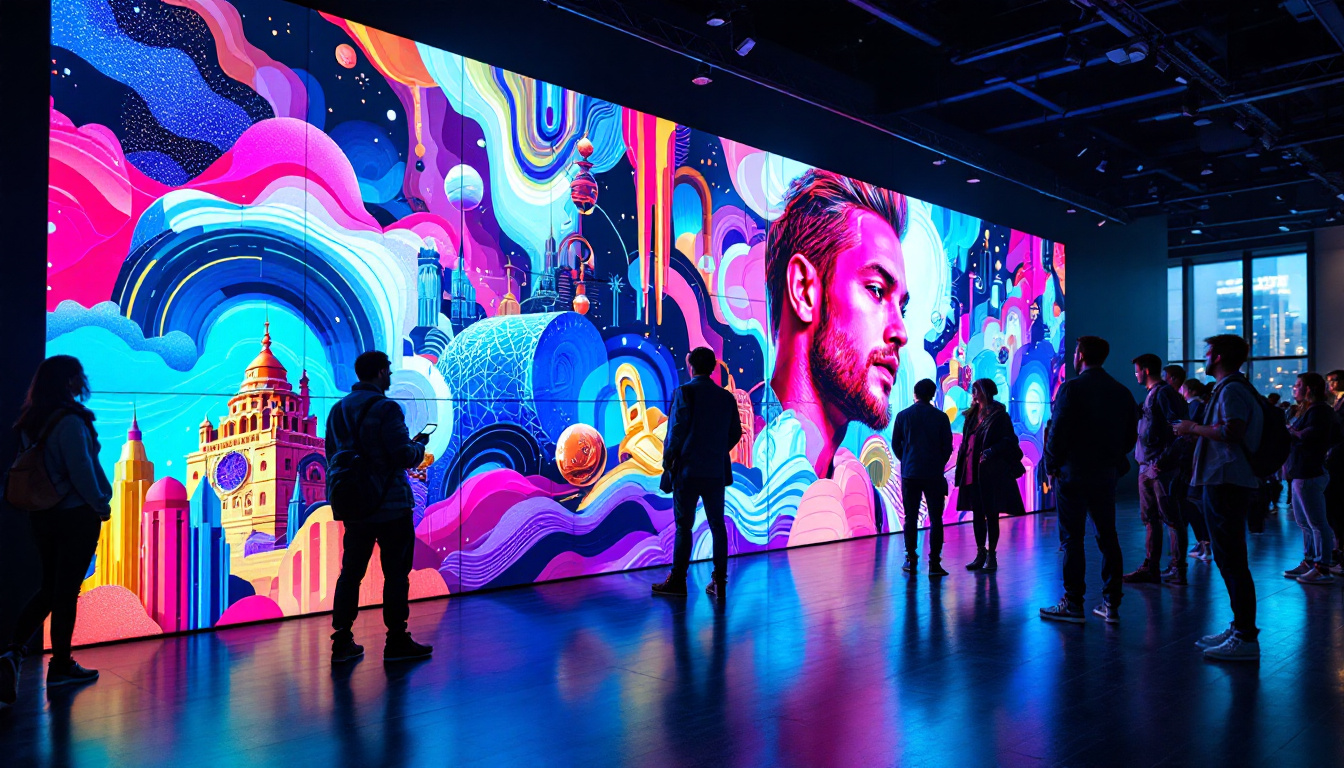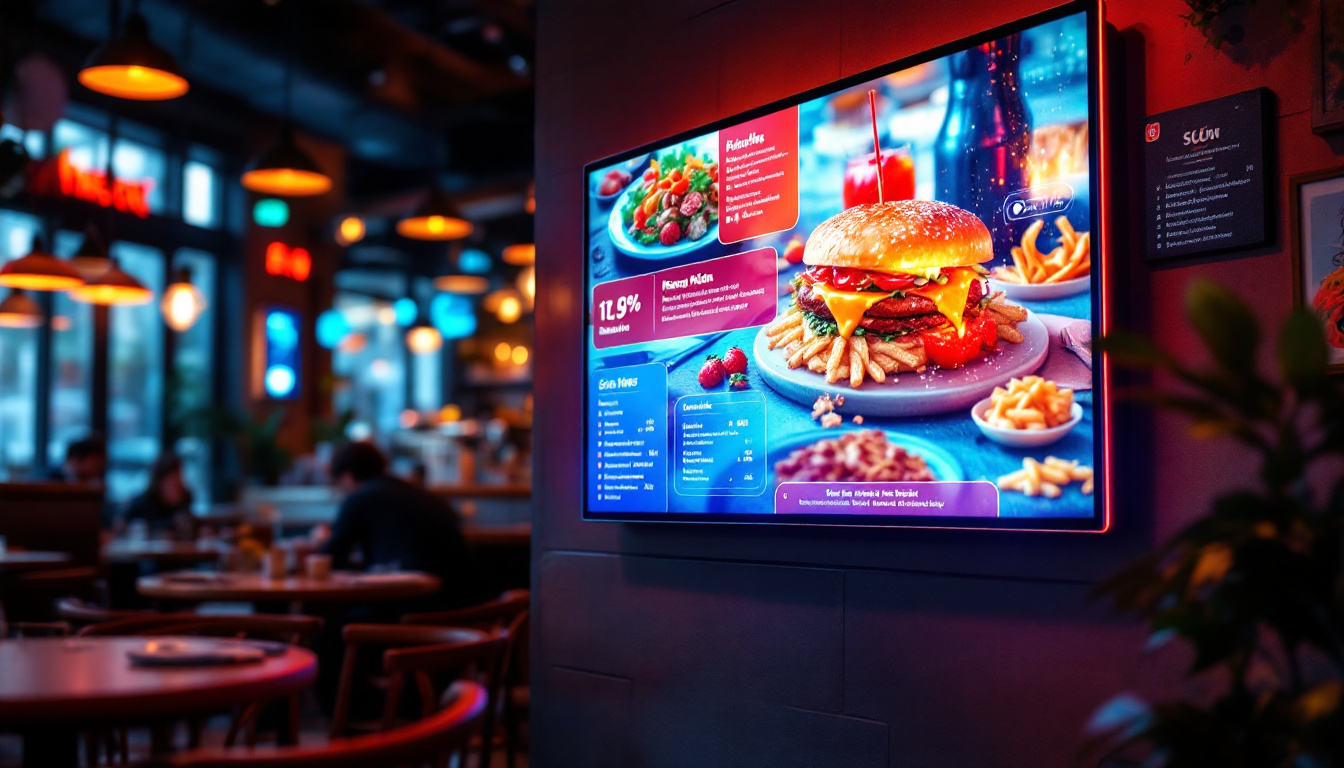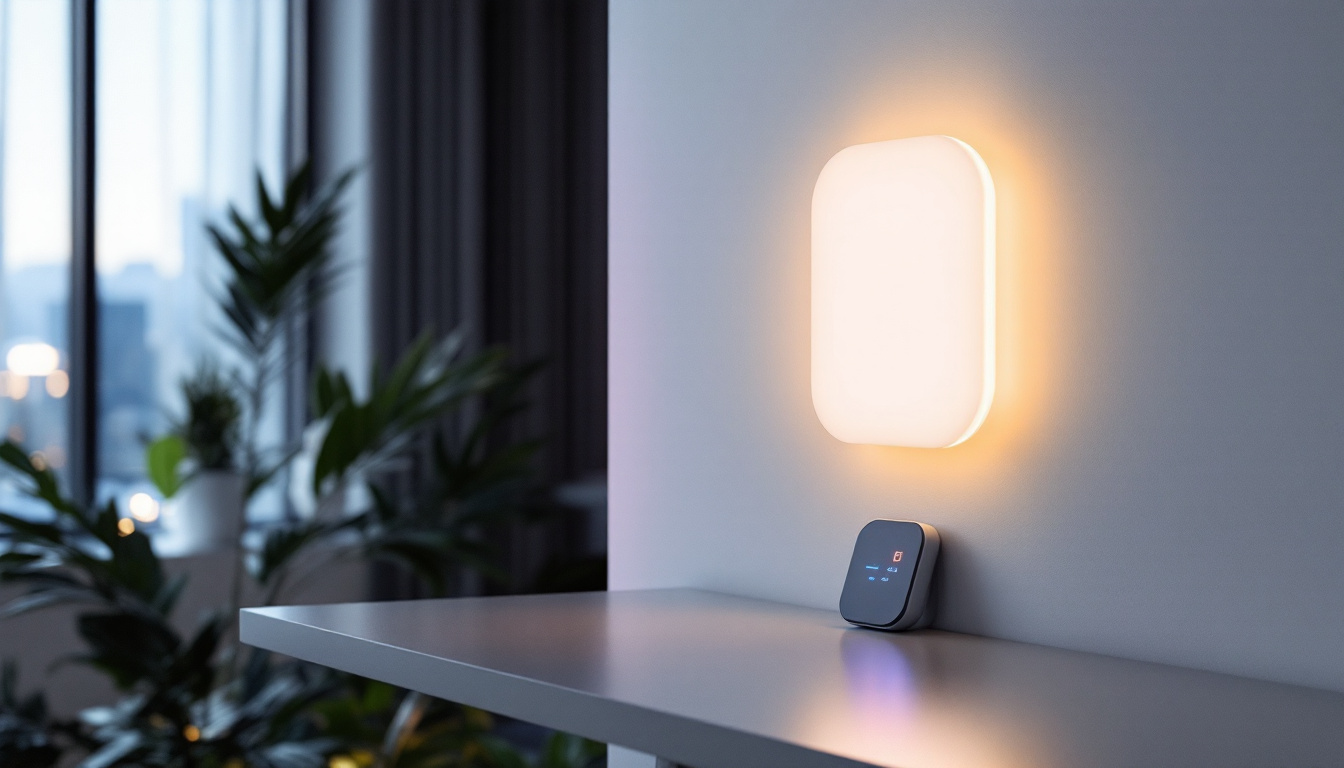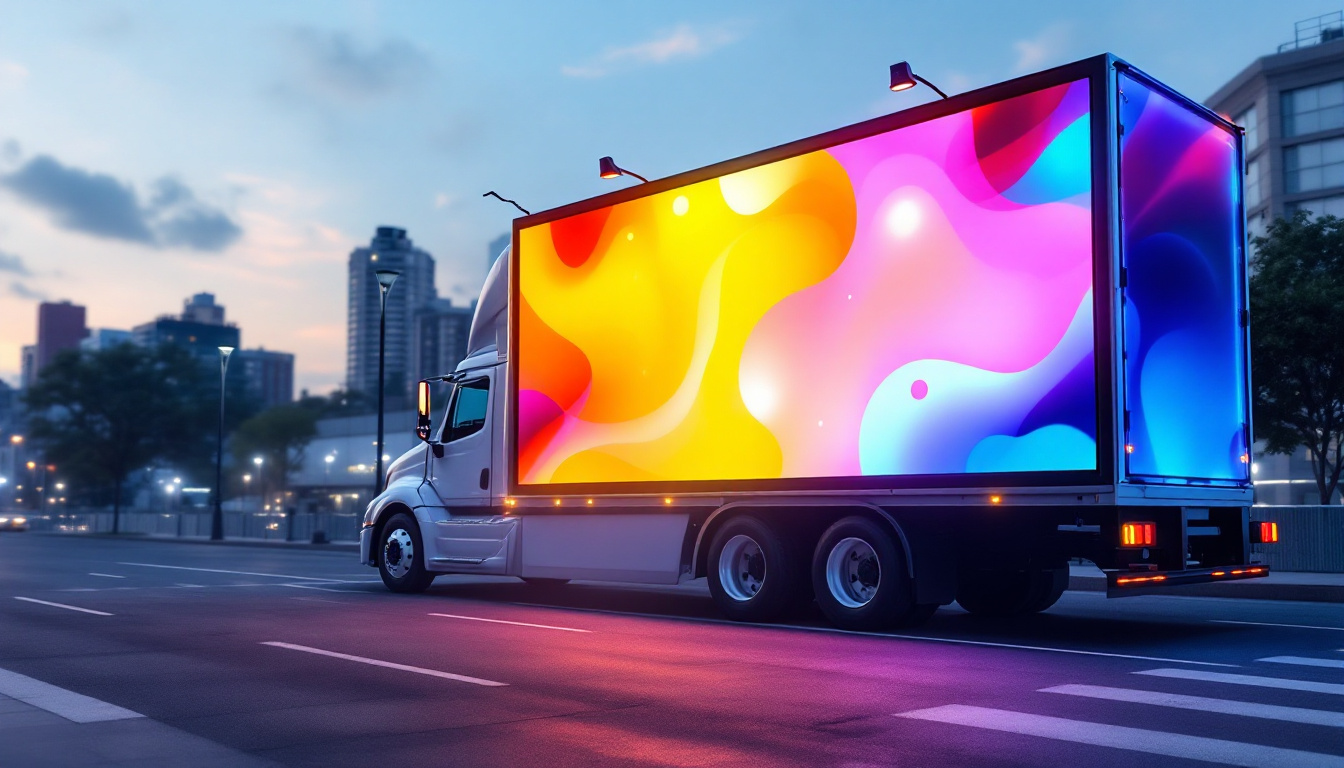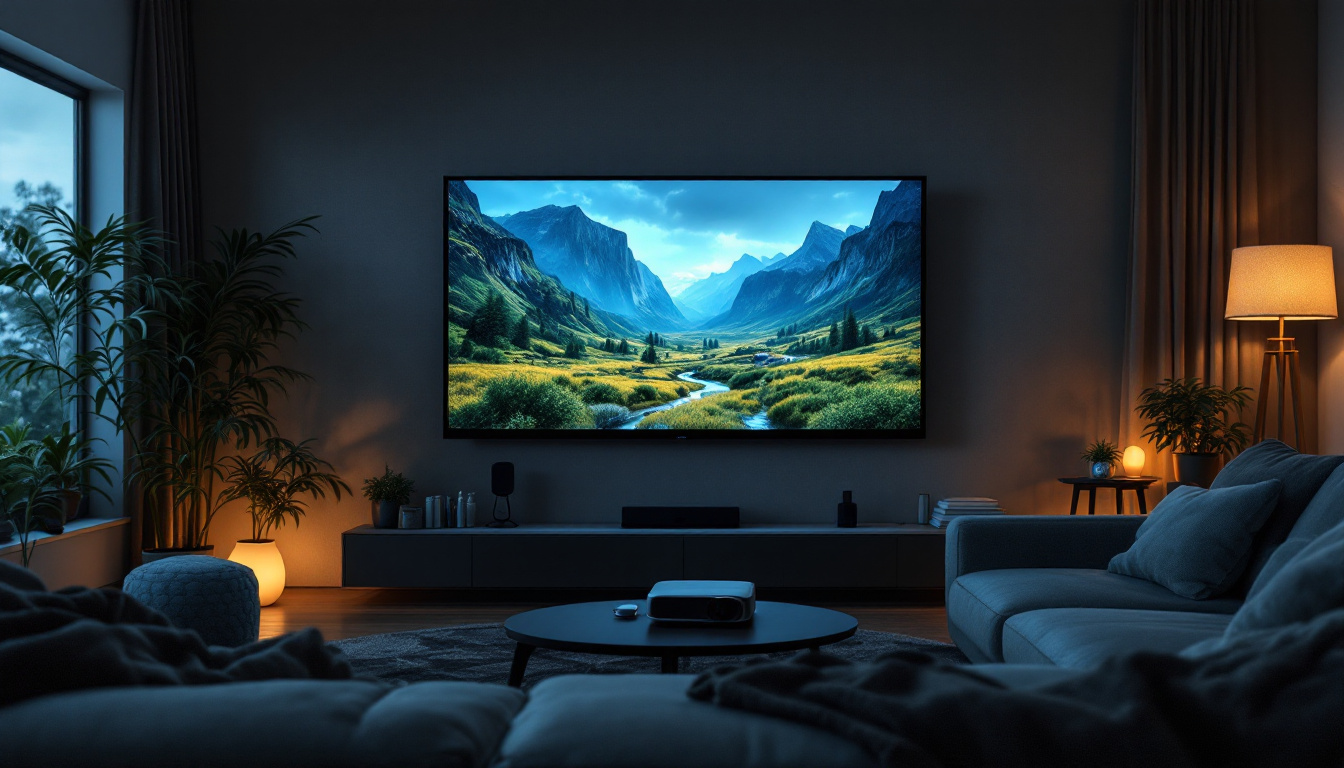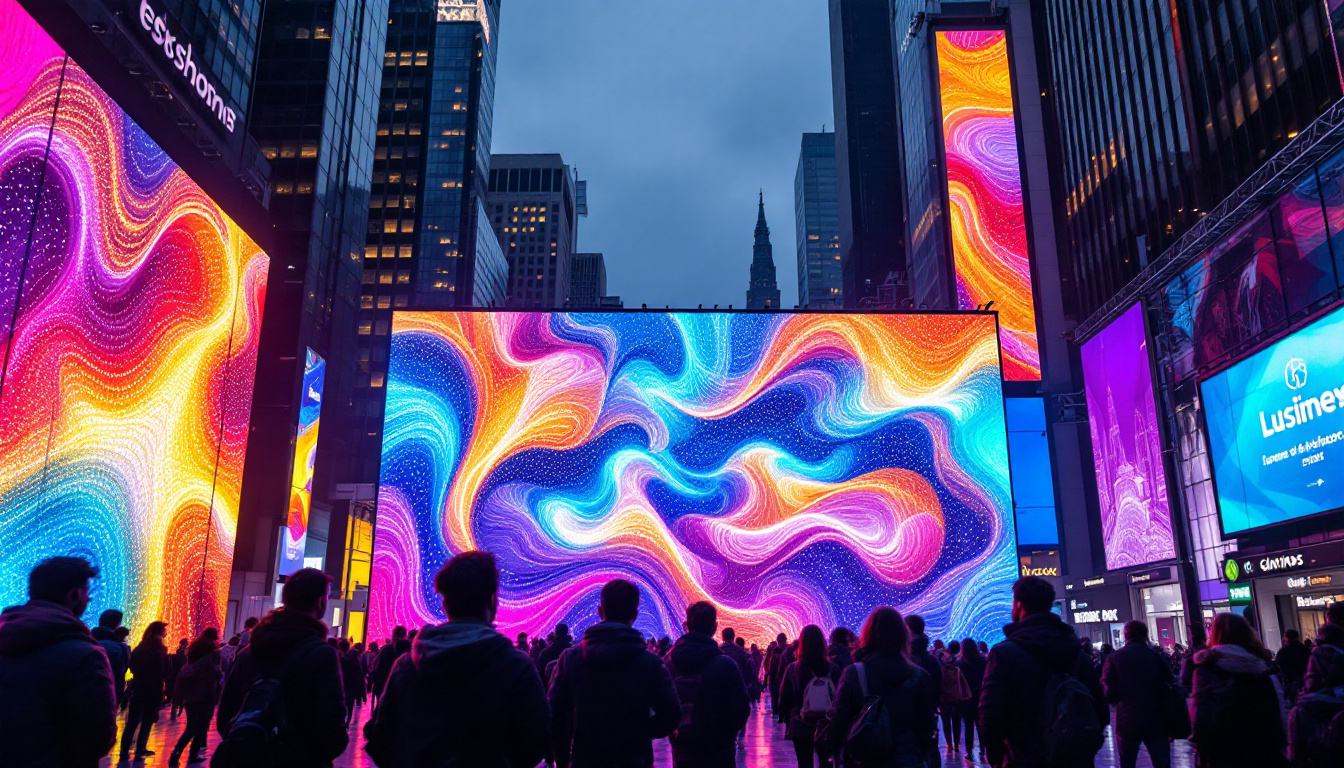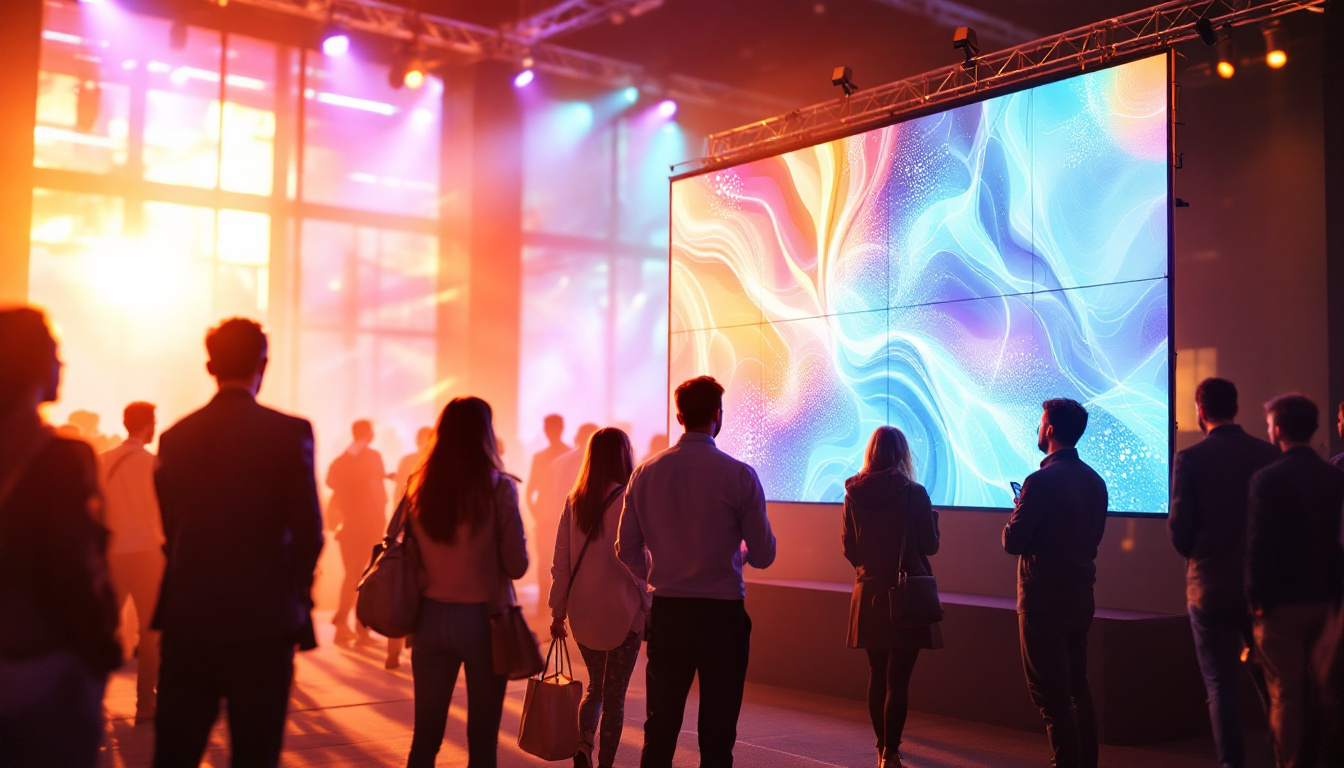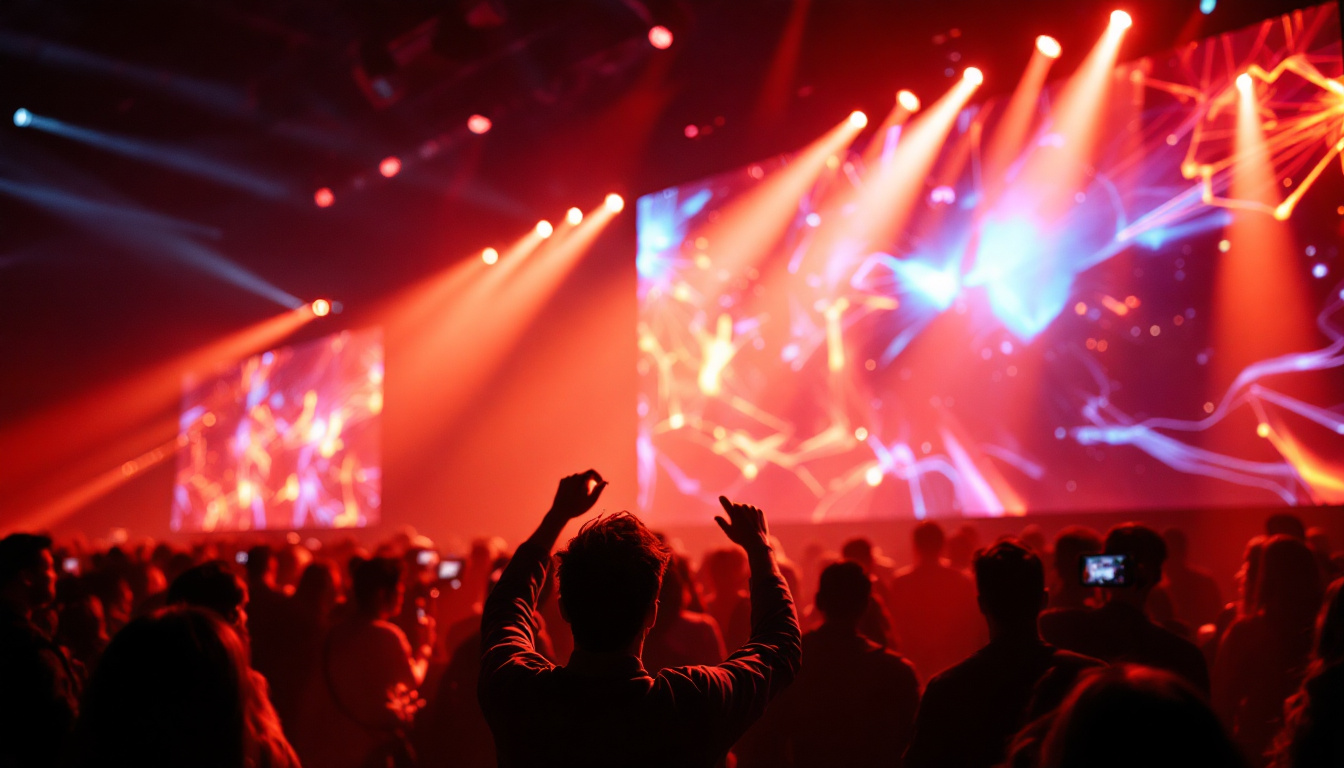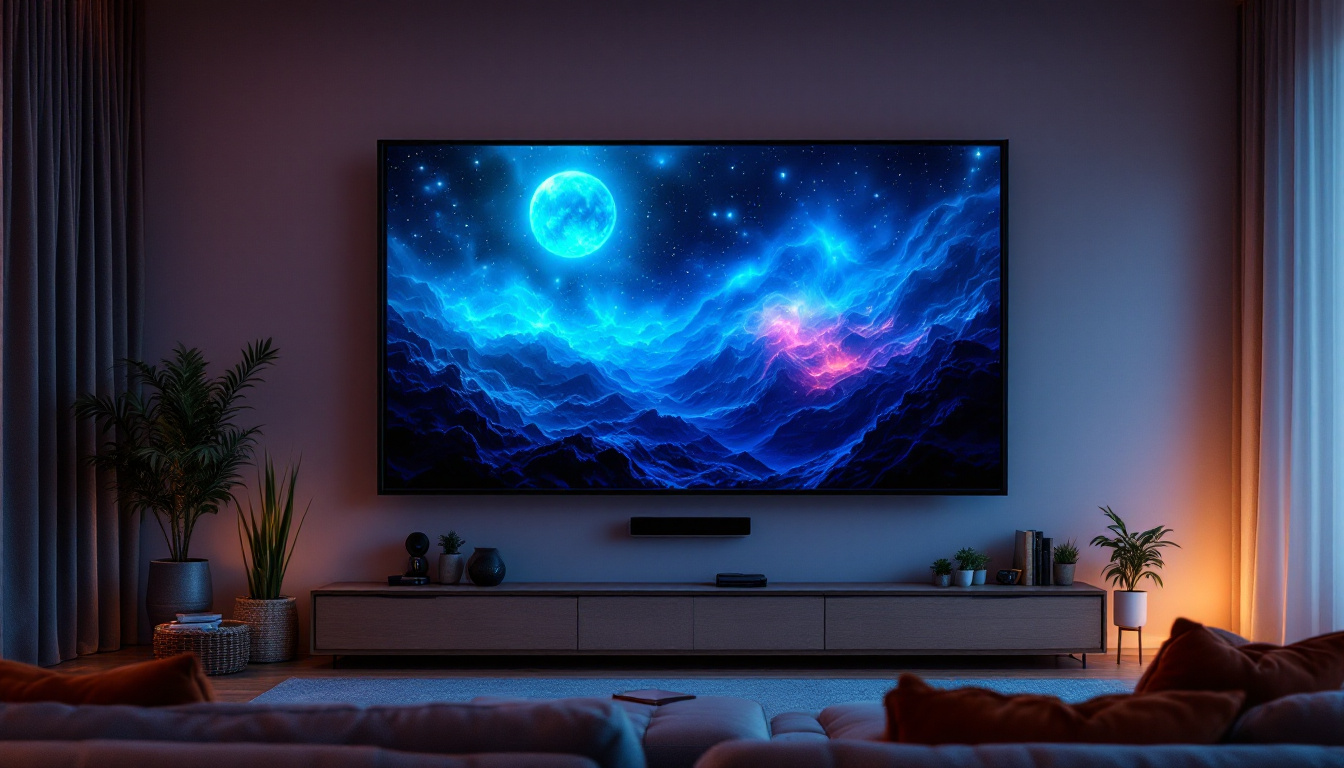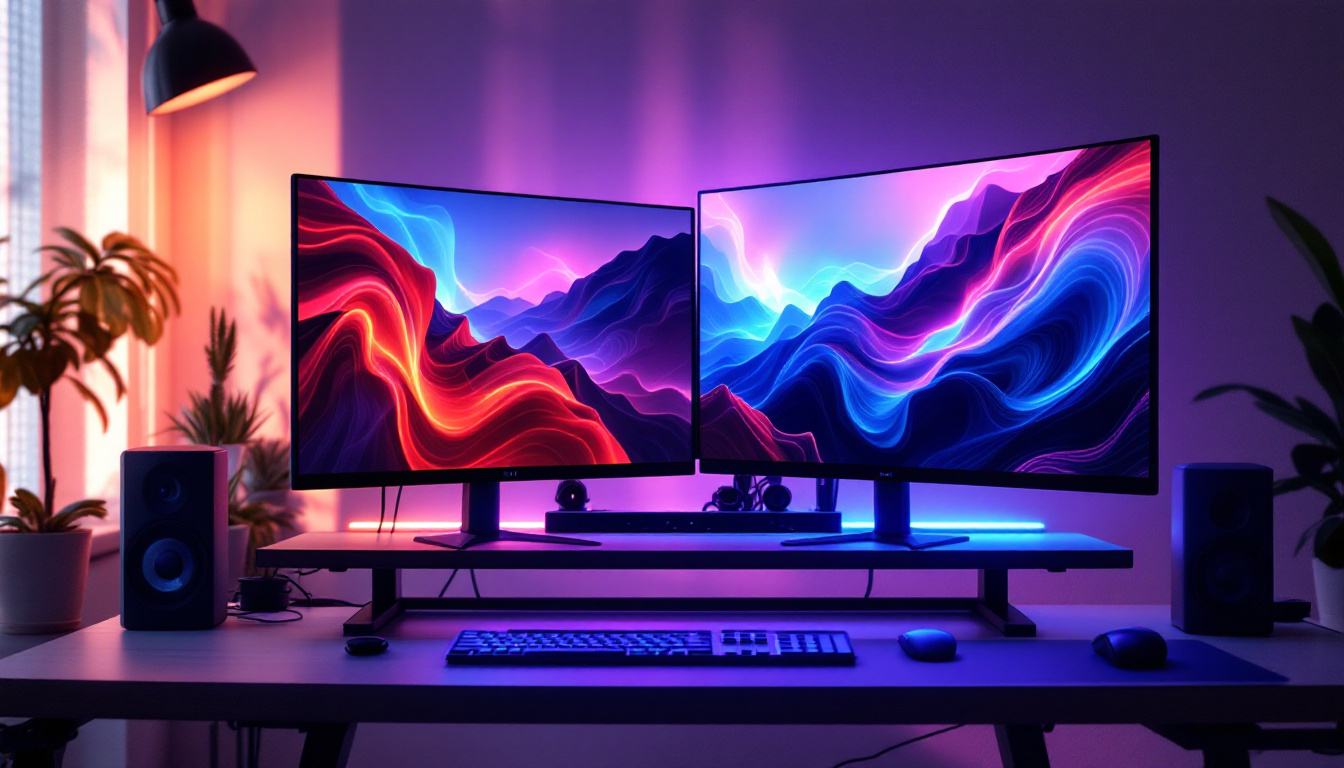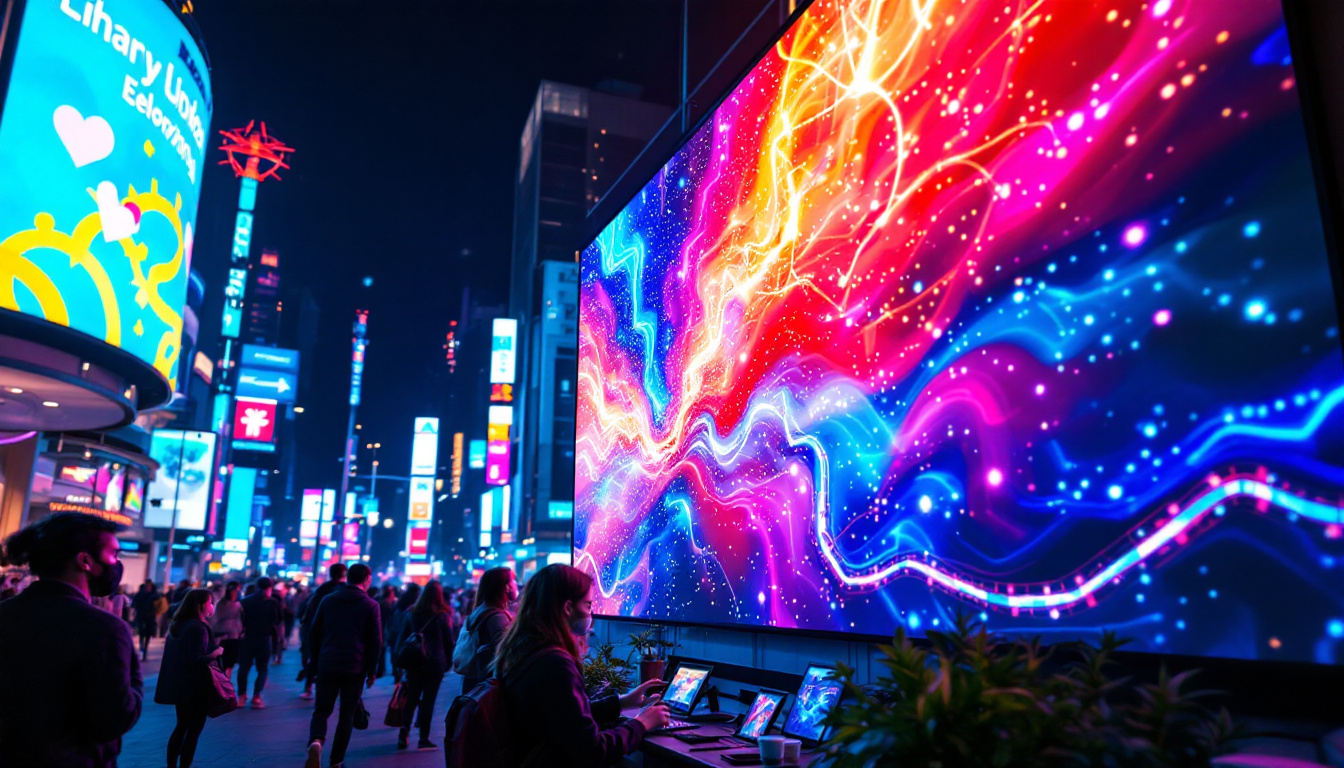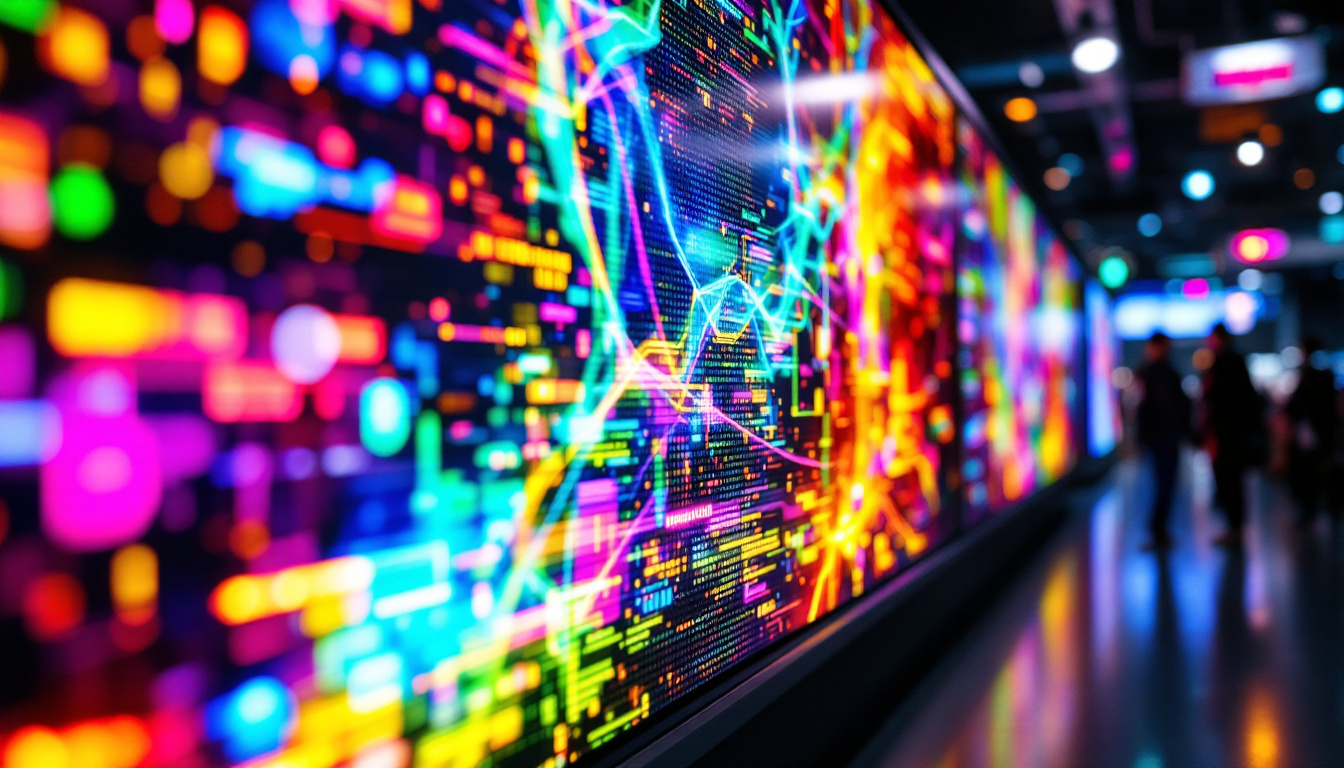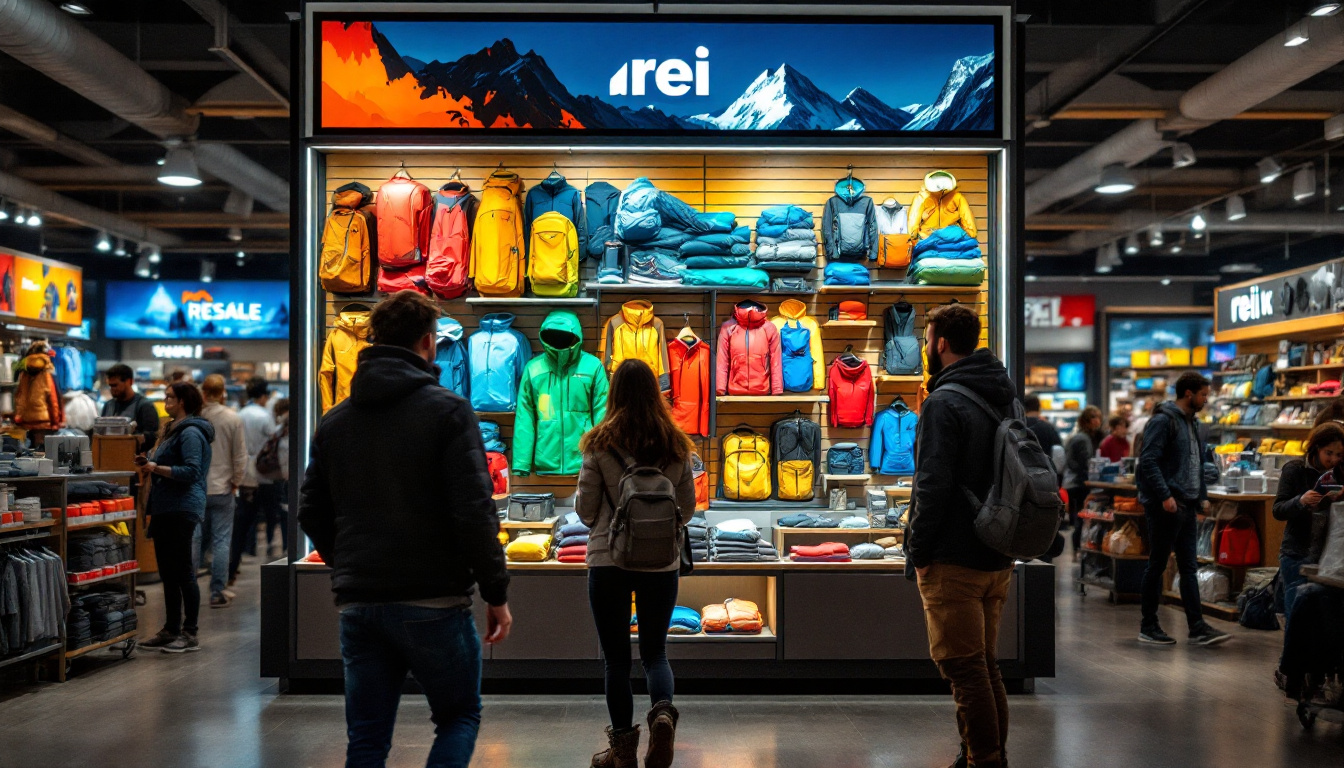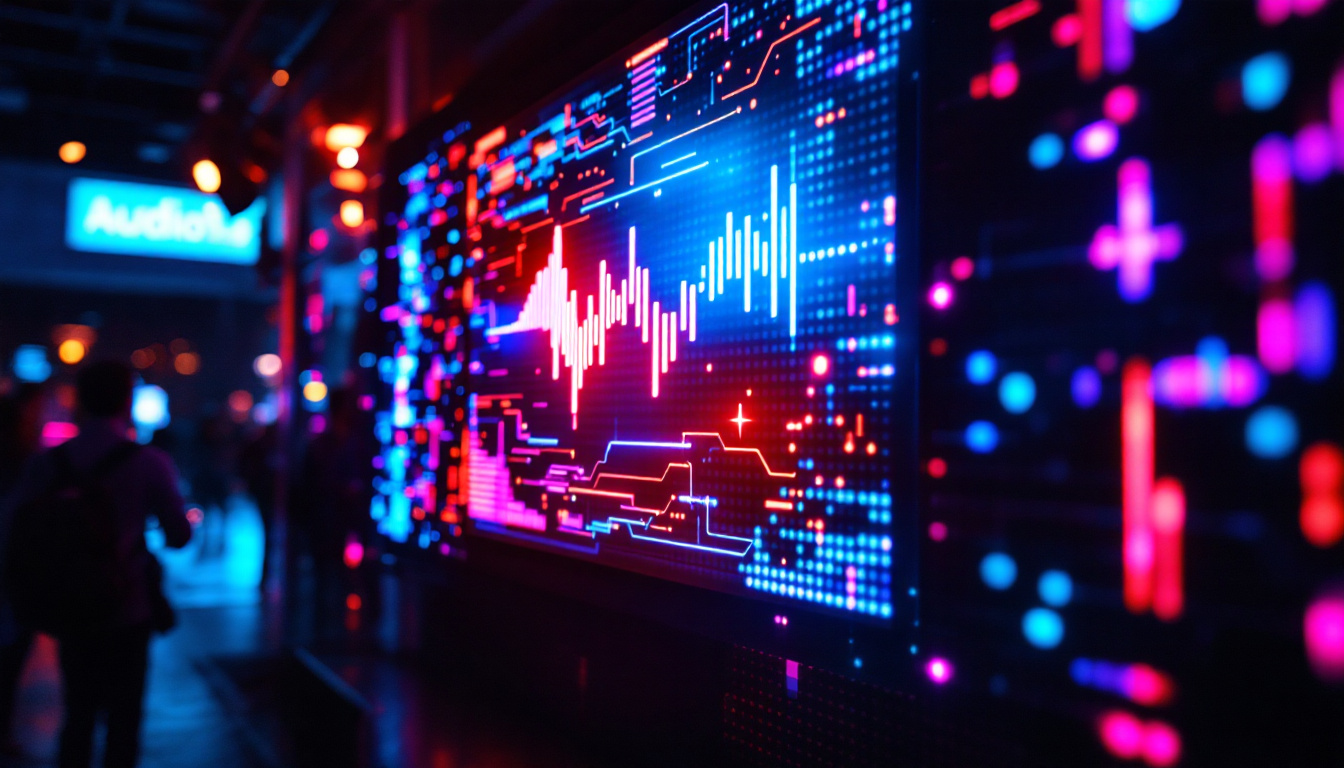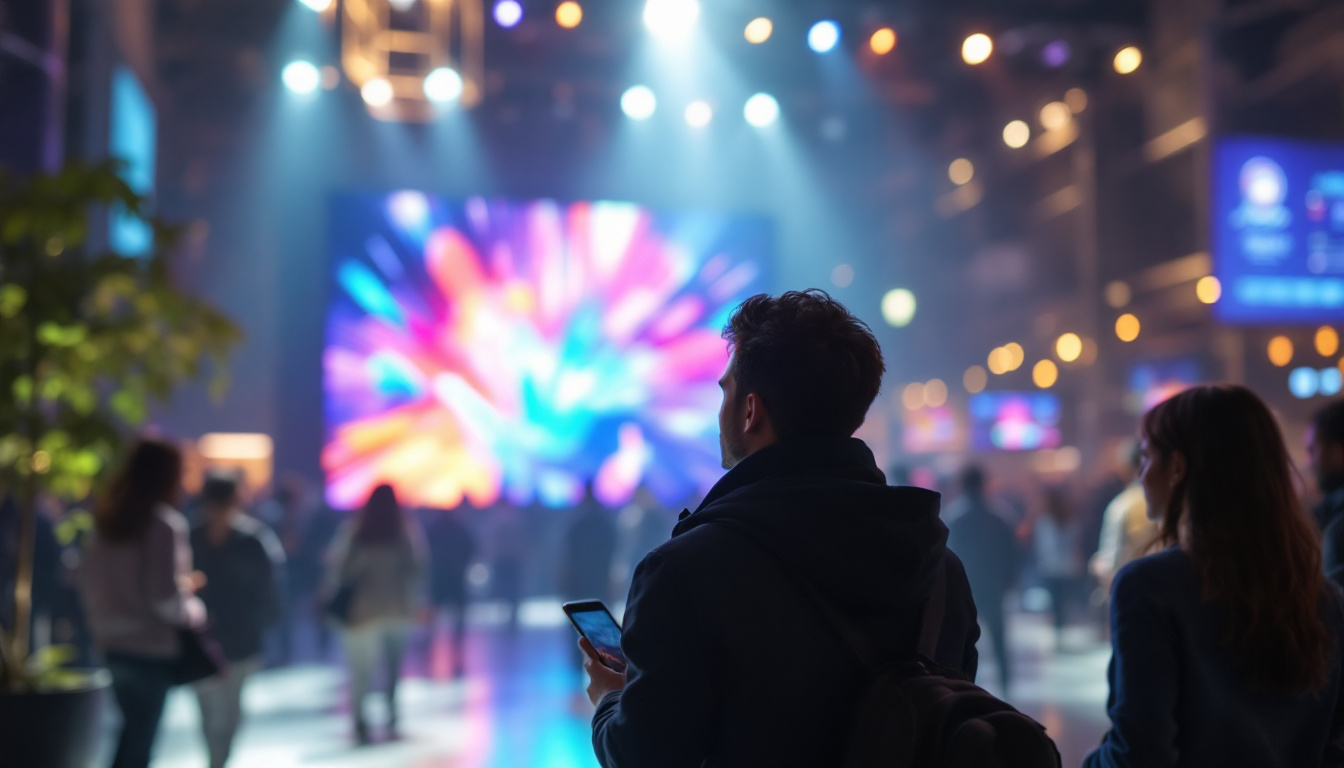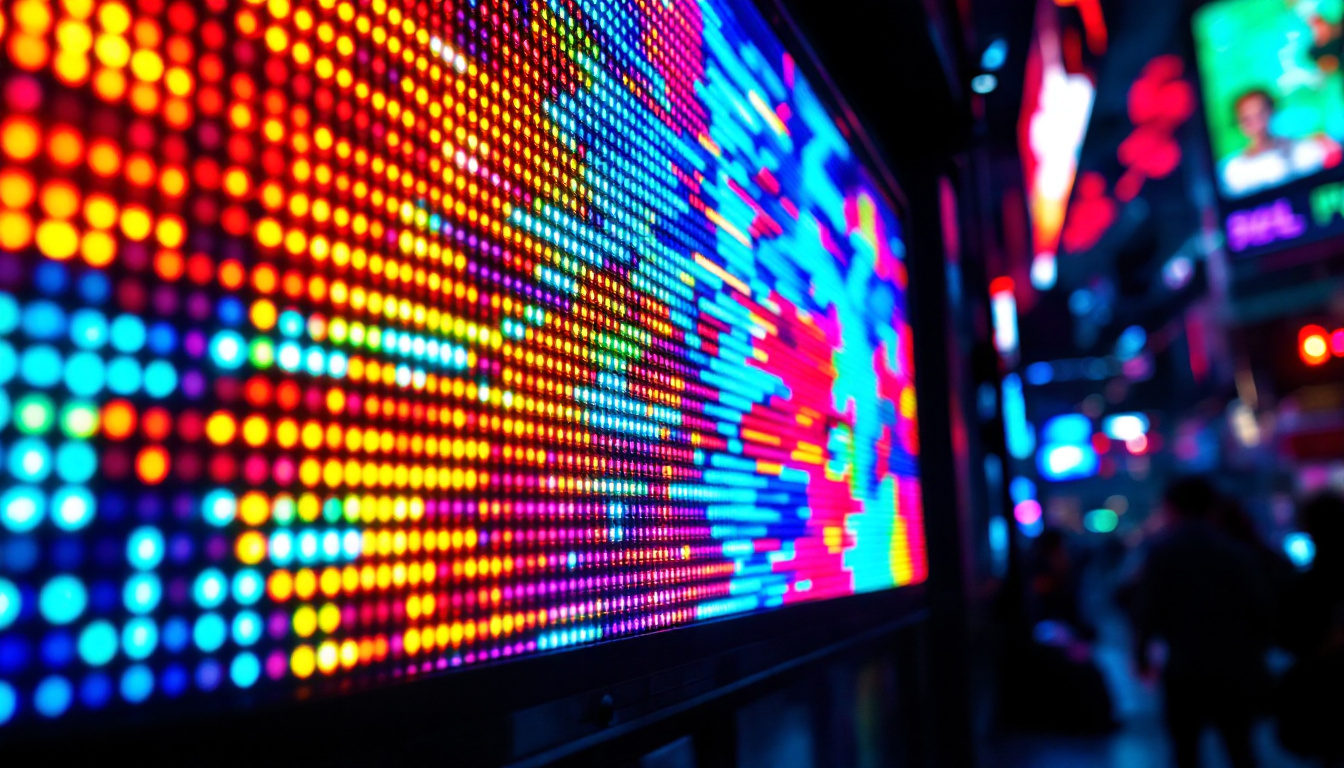In today’s fast-paced digital world, visual communication has become more important than ever. Whether it’s advertising, entertainment, or information dissemination, the demand for vibrant, high-quality displays continues to grow. Wall screen panels with LED technology have emerged as a leading solution, transforming how businesses and organizations engage with their audiences. This article provides a comprehensive explanation of LED displays, focusing on wall screen panels, their technology, applications, and advantages.
Understanding LED Display Technology
LED stands for Light Emitting Diode, a semiconductor device that emits light when an electric current passes through it. LED display technology utilizes thousands to millions of these tiny diodes to create images and videos on a screen. Unlike traditional display technologies such as LCD or plasma, LEDs produce their own light, which results in brighter images and better contrast ratios. This self-illuminating property not only enhances the visual experience but also contributes to energy efficiency, as LEDs consume significantly less power compared to their predecessors.
How LED Displays Work
Each LED in a display panel acts as a single pixel or part of a pixel. By controlling the intensity and color of each LED, the display can render complex images and videos. Modern LED screens use red, green, and blue diodes combined in various intensities to produce the full spectrum of colors visible to the human eye. This RGB combination is the foundation of color reproduction in LED displays. Furthermore, advancements in technology have led to the development of features such as HDR (High Dynamic Range), which enhances color accuracy and contrast, providing viewers with a more lifelike visual experience.
Wall screen panels are typically composed of multiple modular LED tiles or cabinets. These modules are assembled to form large-scale screens that can be customized to different sizes and aspect ratios. The modular design allows for easy maintenance and scalability, making LED wall screens versatile for a range of environments. This flexibility is particularly beneficial in dynamic settings such as live events, where quick adjustments to screen size and configuration may be necessary to suit the audience and venue.
Types of LED Displays
LED displays come in several types, primarily categorized by their pixel pitch, which is the distance between individual LEDs. The pixel pitch directly affects the resolution and viewing distance of the display:
- Indoor LED Displays: These have a smaller pixel pitch (often between 1mm and 4mm), offering high resolution suitable for close-up viewing in environments like conference rooms, retail stores, and control rooms. Their ability to deliver sharp images makes them ideal for presentations and advertising, where clarity is crucial.
- Outdoor LED Displays: With larger pixel pitches (usually 6mm to 20mm or more), these displays are designed to be visible from longer distances and withstand environmental factors such as sunlight, rain, and dust. Many outdoor displays also feature advanced cooling systems and weatherproofing to ensure durability and consistent performance in varying conditions.
- Transparent LED Displays: These innovative panels allow light to pass through, making them ideal for storefront windows and architectural applications where visibility from both sides is desired. Their unique design not only enhances aesthetic appeal but also enables creative advertising solutions, allowing businesses to display dynamic content without obstructing natural light.
Additionally, there’s a growing trend towards flexible LED displays, which can be bent or shaped to fit unconventional spaces. These displays open up new possibilities for creative installations in art, architecture, and advertising, allowing for immersive experiences that engage viewers in novel ways. As technology continues to evolve, the potential applications for LED displays seem limitless, paving the way for even more innovative uses in the future.
Advantages of Wall Screen Panels with LED Technology
LED wall screen panels offer numerous benefits over traditional display technologies, making them the preferred choice for many industries.
Superior Brightness and Visibility
One of the most significant advantages of LED displays is their exceptional brightness. LEDs can achieve brightness levels of up to 5,000 nits or more, which ensures clear visibility even under direct sunlight. This makes LED wall screens ideal for outdoor advertising billboards, stadium screens, and public information displays where ambient light conditions can be challenging.
Energy Efficiency and Longevity
Compared to older display technologies, LEDs consume less power while delivering higher brightness. This energy efficiency translates into lower operating costs and a reduced environmental footprint. Additionally, LED panels have a long lifespan, often exceeding 100,000 hours of operation, which means fewer replacements and less maintenance over time.
Flexibility and Customization
LED wall panels are highly customizable in terms of size, shape, and resolution. Businesses can create seamless video walls that span entire building facades or compact displays tailored to specific interior spaces. The modular nature of LED panels also allows for creative configurations, including curved or irregularly shaped screens, enabling unique visual experiences.
High Contrast and Color Accuracy
Because LEDs emit light directly, they offer superior contrast ratios compared to LCD displays, which rely on backlighting. This direct emission results in deeper blacks and more vibrant colors, enhancing image quality and viewer engagement. Modern LED displays also support wide color gamuts and advanced calibration techniques, ensuring accurate color reproduction for branding and media purposes.
Applications of LED Wall Screen Panels
The versatility of LED wall screen panels has led to their adoption across a wide range of sectors. Each application leverages the unique strengths of LED technology to meet specific communication and display needs.
Advertising and Digital Signage
Outdoor LED billboards and indoor digital signage are among the most common uses of wall screen panels. Their ability to display dynamic content—ranging from static images to full-motion video—makes them powerful tools for marketing campaigns. According to recent industry reports, the global digital signage market is expected to grow at a compound annual growth rate (CAGR) of over 8% through 2027, driven largely by LED display adoption.
Retailers use LED screens to attract customers, promote products, and enhance the shopping experience. In urban environments, LED billboards dominate high-traffic areas, delivering targeted advertising with high visibility.
Entertainment and Events
Concerts, sports arenas, and theaters increasingly rely on large LED video walls to provide immersive experiences. These screens can display live feeds, graphics, and interactive content that engage audiences from any seat in the venue. For example, during major sporting events like the FIFA World Cup or the Olympics, massive LED screens broadcast real-time action and replays, enhancing the spectator experience.
Corporate and Control Rooms
In corporate settings, LED wall panels serve as video walls for presentations, video conferencing, and data visualization. Control rooms in industries such as transportation, utilities, and security use LED displays to monitor operations with high clarity and reliability. The ability to display multiple data streams simultaneously on a large, seamless screen improves situational awareness and decision-making.
Architectural and Public Spaces
Architects and designers integrate LED wall panels into building facades, public squares, and museums to create dynamic visual art and interactive installations. Transparent LED displays enable innovative designs that blend digital content with physical environments without obstructing views. These installations not only beautify spaces but also provide information and entertainment to the public.
Key Considerations When Choosing LED Wall Screen Panels
Selecting the right LED wall screen panel requires careful evaluation of several factors to ensure optimal performance and return on investment.
Resolution and Pixel Pitch
The resolution needed depends on the viewing distance and content type. For close-range indoor applications, a fine pixel pitch ensures crisp images, while larger pixel pitches are sufficient for outdoor displays viewed from afar. Understanding the relationship between pixel pitch and viewing distance is essential to avoid pixelation or unnecessary cost.
Brightness and Environmental Durability
Outdoor installations must have high brightness levels and be rated for weather resistance, including waterproofing and dust protection. LED panels designed for harsh environments often come with IP65 or higher ratings, ensuring they operate reliably in rain, wind, and extreme temperatures.
Refresh Rate and Color Depth
High refresh rates reduce flicker, which is particularly important for video content and camera recording. Color depth affects the range of colors the display can reproduce, influencing image quality and realism. Choosing panels with adequate refresh rates (typically 1920 Hz or higher) and color depth ensures smooth, vibrant visuals.
Installation and Maintenance
Modular LED panels simplify installation and maintenance, but considerations such as mounting structure, power supply, and cooling systems must be addressed. Some LED wall screens support front access for maintenance, which is beneficial in tight spaces where rear access is limited.
Future Trends in LED Wall Screen Technology
The LED display industry continues to evolve rapidly, driven by advances in materials, manufacturing, and digital processing.
Mini-LED and Micro-LED Innovations
Mini-LED and Micro-LED technologies push the boundaries of pixel density and brightness. Micro-LEDs, in particular, offer the potential for even thinner, more energy-efficient displays with superior color accuracy and contrast. These advancements promise to enhance wall screen panels for both indoor and outdoor applications.
Integration with Smart Technologies
Smart LED displays equipped with sensors and AI capabilities enable dynamic content adaptation based on environmental conditions or audience demographics. For instance, digital signage can automatically adjust brightness or display personalized advertisements, improving engagement and effectiveness.
Eco-Friendly Manufacturing and Operation
As sustainability becomes a priority, manufacturers are focusing on reducing the environmental impact of LED panels through recyclable materials, energy-efficient designs, and longer lifespans. This aligns with global efforts to reduce electronic waste and carbon footprints.
Conclusion
Wall screen panels with LED technology represent a powerful medium for visual communication, offering unmatched brightness, flexibility, and durability. Their applications span advertising, entertainment, corporate environments, and public spaces, making them indispensable in modern digital signage and display solutions. By understanding the technology, benefits, and critical factors for selection, businesses and organizations can harness the full potential of LED wall screens to captivate audiences and convey messages effectively.
As LED technology continues to advance, the future holds exciting possibilities for even more immersive and sustainable display experiences. Staying informed about these developments will ensure that users maximize their investment and remain at the forefront of digital display innovation.
Discover LumenMatrix’s Innovative LED Solutions
Ready to elevate your visual communication with cutting-edge LED technology? Look no further than LumenMatrix, a pioneer in the field, committed to bringing you the most advanced LED display modules. Whether you’re interested in Indoor, Outdoor, Vehicle, Poster, Sports, Floor, Custom, or All-in-One LED displays, or even LED Transparent Displays, LumenMatrix has a solution tailored to your needs. Experience the transformative power of our LED displays and let your brand shine like never before. Check out LumenMatrix LED Display Solutions today and step into the future of vibrant and engaging digital signage.

